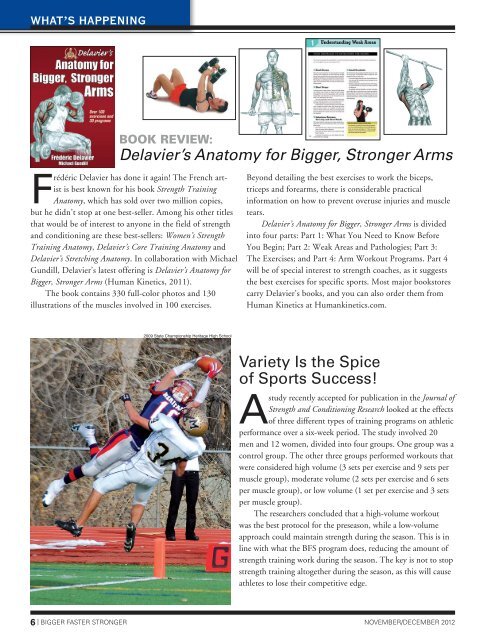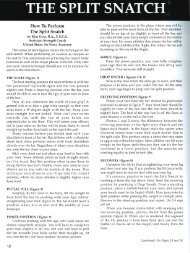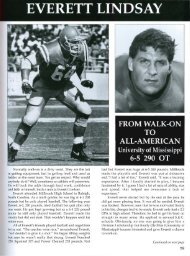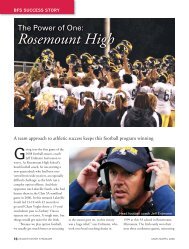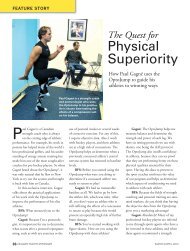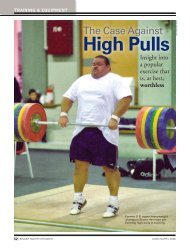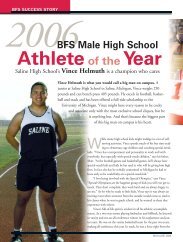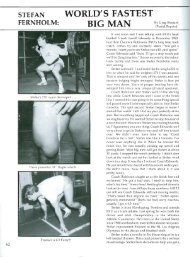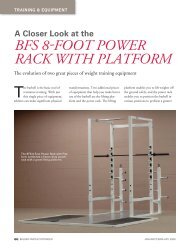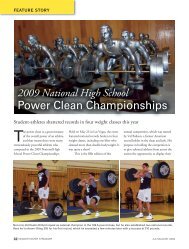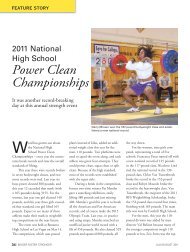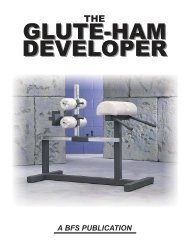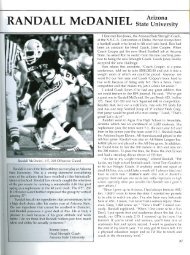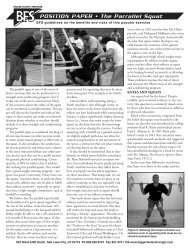Ryan Faehnle: Walking the Talk - Bigger Faster Stronger
Ryan Faehnle: Walking the Talk - Bigger Faster Stronger
Ryan Faehnle: Walking the Talk - Bigger Faster Stronger
Create successful ePaper yourself
Turn your PDF publications into a flip-book with our unique Google optimized e-Paper software.
WHAT’S HAPPENING<br />
BOOK REVIEW:<br />
Delavier’s Anatomy for <strong>Bigger</strong>, <strong>Stronger</strong> Arms<br />
Frédéric Delavier has done it again! The French artist<br />
is best known for his book Strength Training<br />
Anatomy, which has sold over two million copies,<br />
but he didn’t stop at one best-seller. Among his o<strong>the</strong>r titles<br />
that would be of interest to anyone in <strong>the</strong> field of strength<br />
and conditioning are <strong>the</strong>se best-sellers: Women’s Strength<br />
Training Anatomy, Delavier’s Core Training Anatomy and<br />
Delavier’s Stretching Anatomy. In collaboration with Michael<br />
Gundill, Delavier’s latest offering is Delavier’s Anatomy for<br />
<strong>Bigger</strong>, <strong>Stronger</strong> Arms (Human Kinetics, 2011).<br />
The book contains 330 full-color photos and 130<br />
illustrations of <strong>the</strong> muscles involved in 100 exercises.<br />
Beyond detailing <strong>the</strong> best exercises to work <strong>the</strong> biceps,<br />
triceps and forearms, <strong>the</strong>re is considerable practical<br />
information on how to prevent overuse injuries and muscle<br />
tears.<br />
Delavier’s Anatomy for <strong>Bigger</strong>, <strong>Stronger</strong> Arms is divided<br />
into four parts: Part 1: What You Need to Know Before<br />
You Begin; Part 2: Weak Areas and Pathologies; Part 3:<br />
The Exercises; and Part 4: Arm Workout Programs. Part 4<br />
will be of special interest to strength coaches, as it suggests<br />
<strong>the</strong> best exercises for specific sports. Most major bookstores<br />
carry Delavier’s books, and you can also order <strong>the</strong>m from<br />
Human Kinetics at Humankinetics.com.<br />
<br />
Variety Is <strong>the</strong> Spice<br />
of Sports Success!<br />
A<br />
study recently accepted for publication in <strong>the</strong> Journal of<br />
Strength and Conditioning Research looked at <strong>the</strong> effects<br />
of three different types of training programs on athletic<br />
performance over a six-week period. The study involved 20<br />
men and 12 women, divided into four groups. One group was a<br />
control group. The o<strong>the</strong>r three groups performed workouts that<br />
were considered high volume (3 sets per exercise and 9 sets per<br />
muscle group), moderate volume (2 sets per exercise and 6 sets<br />
per muscle group), or low volume (1 set per exercise and 3 sets<br />
per muscle group).<br />
The researchers concluded that a high-volume workout<br />
was <strong>the</strong> best protocol for <strong>the</strong> preseason, while a low-volume<br />
approach could maintain strength during <strong>the</strong> season. This is in<br />
line with what <strong>the</strong> BFS program does, reducing <strong>the</strong> amount of<br />
strength training work during <strong>the</strong> season. The key is not to stop<br />
strength training altoge<strong>the</strong>r during <strong>the</strong> season, as this will cause<br />
athletes to lose <strong>the</strong>ir competitive edge.<br />
6 | BIGGER FASTER STRONGER NOVEMBER/DECEMBER 2012


